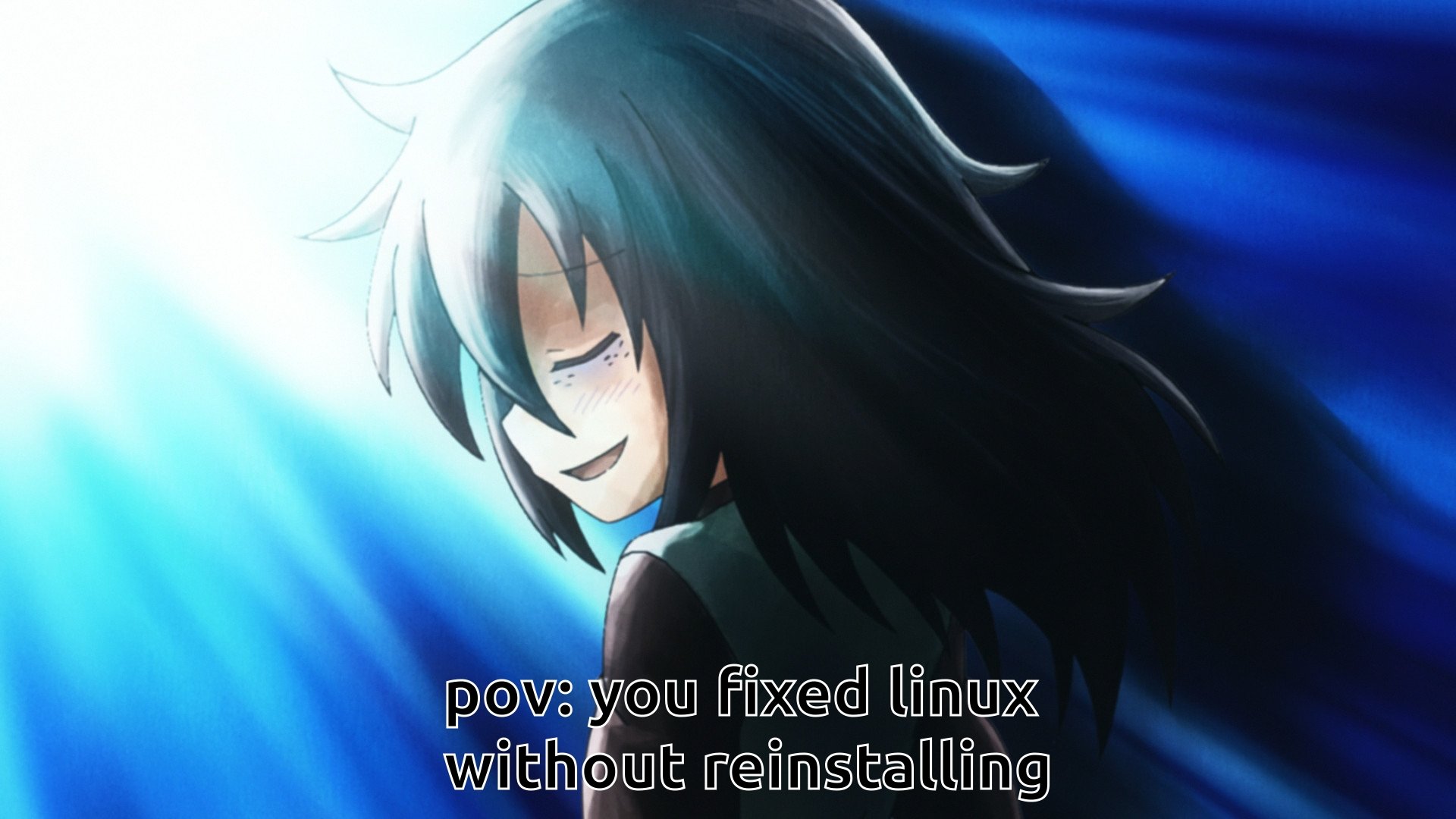this post was submitted on 26 Mar 2024
637 points (96.4% liked)
linuxmemes
21393 readers
1345 users here now
Hint: :q!
Sister communities:
Community rules (click to expand)
1. Follow the site-wide rules
- Instance-wide TOS: https://legal.lemmy.world/tos/
- Lemmy code of conduct: https://join-lemmy.org/docs/code_of_conduct.html
2. Be civil
- Understand the difference between a joke and an insult.
- Do not harrass or attack members of the community for any reason.
- Leave remarks of "peasantry" to the PCMR community. If you dislike an OS/service/application, attack the thing you dislike, not the individuals who use it. Some people may not have a choice.
- Bigotry will not be tolerated.
- These rules are somewhat loosened when the subject is a public figure. Still, do not attack their person or incite harrassment.
3. Post Linux-related content
- Including Unix and BSD.
- Non-Linux content is acceptable as long as it makes a reference to Linux. For example, the poorly made mockery of
sudoin Windows. - No porn. Even if you watch it on a Linux machine.
4. No recent reposts
- Everybody uses Arch btw, can't quit Vim, and wants to interject for a moment. You can stop now.
Please report posts and comments that break these rules!
Important: never execute code or follow advice that you don't understand or can't verify, especially here. The word of the day is credibility. This is a meme community -- even the most helpful comments might just be shitposts that can damage your system. Be aware, be smart, don't fork-bomb your computer.
founded 1 year ago
MODERATORS
you are viewing a single comment's thread
view the rest of the comments
view the rest of the comments

I managed a CentOS system where someone accidentally deleted everything from /usr, so no lib64, and no bin. I didn't have a way to get proper files at the time, so I hooked the drive up to my Arch system, made sure glibc matched, and copied yum and other tools from Arch.
Booted the system, reinstalled a whole lot of yum packages, and... the thing still worked.
That's almost equivalent to a reinstall, though. As a broke college student, I had a laptop with a loose drive, that would fall out very easily. I set it up to load a few crucial things into a ramdisk at boot, so that I could browse the web and take notes even if the drive was disconnected, and it would still load images and things. I could pull the cover off and push the drive back in place to save files, but doing that every time I had class got really tiring, so I wanted it to run a little like a live system.
I have taken a drive with filesystem issues, mounted on a different machine and either backup data I wanted to keep or copy files to make the original machine runnable.